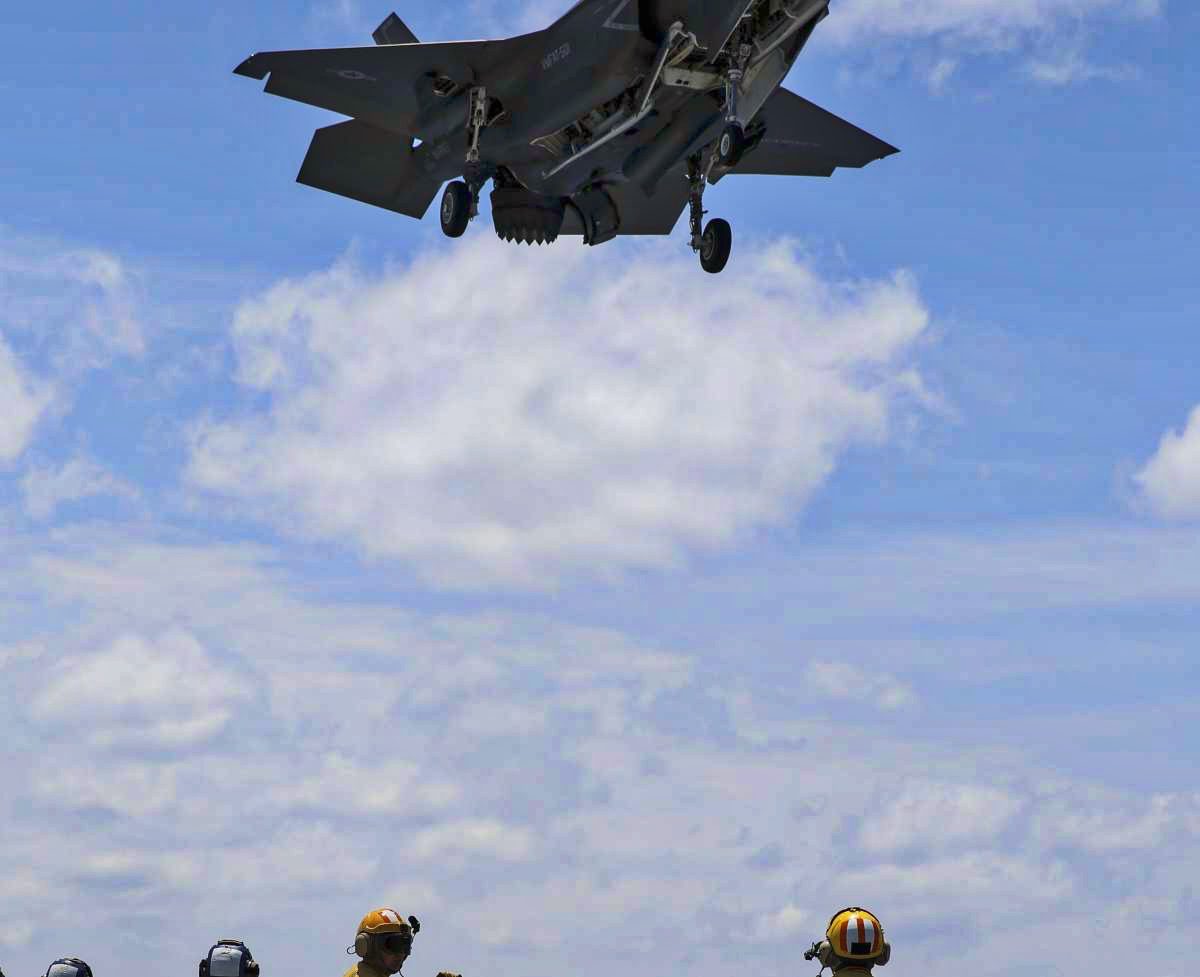Houthi Video Shows Sinking of M/V Magic Seas in Red Sea
Yemen’s Houthi militants have released propaganda footage appearing to show the Greek bulk carrier M/V Magic Seas sinking in the Red Sea following their attack on July 6. The vessel...

F-35B Landing On The USS Wasp. US Marine Corps photo by Cpl. Anne K. Henry
Scroll Down For Video
Testing began this month on the U.S. Marine Corp’s new, highly anticipated, aircraft. At $135 million each the F-35B Lightning II fighter jet is the expensive sibling to vertical take off and landing aircraft like its older brother, the venerable Harrier Jump Jet. Since May 18, Marines and sailors have worked together to conduct Operational Testing 1, to test the integration of the F-35B with a U.S. Navy warship, the (LHD-1).
[contextly_sidebar id=”xnlDaag7EJk4SDlHD2ICDQNoWITLS8y4″]Throughout OT-1, the aircraft and staff involved were challenged with a variety of flight and deck operations, allowing the gathering of data which will lay the groundwork for future F-35B deployments aboard U.S. Navy amphibious carriers.
“This operational test period that we are conducting a direct representative of fleet Marine Corps operating forces,” said Col. Robert Rauenhorst, the commanding officer of Marine Operational Test and Evaluation Squadron 22. “We are taking a look at how the F-35 program is developing, as well as ship changes that have been worked through Naval Sea Systems Command, as well the F-35 Joint Program Office.”
OT-1 offered many first experiences for both staff and the F-35B itself. One of these firsts was Marine Corps pilots landing the aircraft on a carrier at night.
“This is the first time we are doing this on a ship with six aircraft instead of two, and the standard Marine Corps footprint of roughly 150 Marines to work on the aircraft,” said Lt. Col. Michael Dehner, the Navy’s Operational Test Director. “We are at that transition step before anyone will be able to use the F-35B as a warfighting platform.”
Not only is the F-35B the most versatile and technologically advanced aircraft in the skies today, it will also be replacing three legacy Marine Corps platforms; the AV-8B Harrier, the F/A-18 Hornet, and the EA-6B Prowler.
“I initially flew Harriers,” said Capt. Colin Newbold, an F-35B pilot with Marine Fighter Attack Squadron 121. “It is a very different airplane to fly than the Harrier. However, it’s a great jet to fly, very pilot friendly. And I think we’ll find a lot of success with it.”
Another unique aspect of OT-1 has been the United Kingdom’s involvement.
Prior to OT-1, Royal Navy and Royal Air Force staff weere imbedded with both the Joint Strike Fighter community and participating Marine units to receive hands-on training with the aircraft.
“For the United Kingdom, this is a great opportunity to see the same variant aircraft that they will work with,” said Dehner. “It is valuable insight as they are working on the Queen Elizabeth Class Carriers.”
In addition to doing operational testing and seeing how the aircraft is compatible with the Marine Corps’ warfighting components, the ability to logistically support aircraft aboard a U.S. Navy amphibious ship was also assessed.
“Our learning points from this are going to not only stress the design, but also the logistics footprint for the aircraft,” said Dehner. “We want to see how it works in that confined space, which is the ship, as we get into when we want to deploy this aircraft with all the logistics support behind it. This is a great stress test.”
As of May 26, F-35B pilots aboard USS Wasp have flown more than 80 sorties from the ship. For the first time, the Marine Corps proved that a spare F-35B engine power module, a very large and intricate piece of machinery, can be safely transported from shore to ship in an MV-22 Osprey, providing depth to the Corps’ F-35B supply chain.
“Being out here and participating in this is a milestone,” said Newbold. “We have accomplished so much in such a short period. It’s really great to take part in something like this.”

Sign up for gCaptain’s newsletter and never miss an update

Subscribe to gCaptain Daily and stay informed with the latest global maritime and offshore news


Stay informed with the latest maritime and offshore news, delivered daily straight to your inbox
Essential news coupled with the finest maritime content sourced from across the globe.
Sign Up